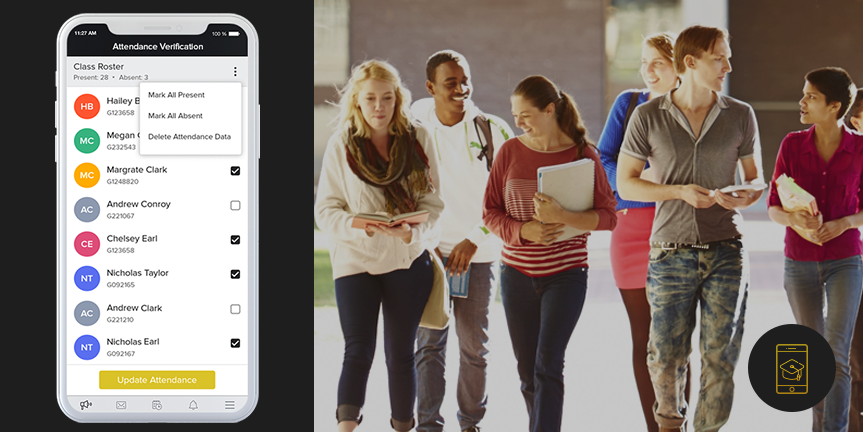5 Brilliant Ways To Boost An Institution’s Retention Rate With Mobile Technologies
There is a whopping rise in the use of smart devices, especially smartphones and tablets, among the students in higher-ed. With the recent advancements in mobile technologies, the fact is undeniable that higher-ed students are going to rely on mobile devices such as mobile phones and tablets for studies in near future.
If you compare the usage of mobile web and mobile apps, you would observe that learning through mobile apps was more beneficial through mobile web. Students are increasingly depending upon mobile apps for online study materials, tests, and enrolments. They can also order food, shop online, chat with other students, and so on.
Looking at the growing demand for mobile apps, several universities and colleges have started adopting mobile apps to fulfill their students’ demands for sophisticated tools and technologies. This approach has helped institutions such as Jefferson Community College and Rockland Community College get highly positive results, increasing student engagement and retention.
How to Use Mobile Technologies to Promote Student Retention
Looking at the growing interest of students for mobile phones, several higher-ed institutions have started looking for various new student engagement strategies that involve mobiles. Student engagement and retention tactics are also vital to build a reputable image of any institution.
We have listed the top 5 ways to increase student retention and engagement through campus mobile apps:
1. Self-Guided Campus Tours
Self-guided campus tours or virtual tours of the campus arranged by student ambassadors is a highly effective way of engaging students. As student ambassadors understand their students more explicitly, they are more likely to deliver such sessions in an interactive manner.
They can achieve this by highlighting the most attractive features of the mobile apps, which usually include the following:
- Robust content including study materials, student profiles, class schedules, accommodation details, campus policies, etc.
- A built-in GPS system that tracks student presence on campus and displays the corresponding information including the exact coordinates and images.
- Regularly updated information to save students’ time.
- Information that is accessible from anywhere.
- Option to submit contact information and place request for additional information quickly.
Campus tours narrated by student ambassadors add a personal touch, while helping the institution achieve their targets for sales and promotions.
2. Interactive and Creative Content
Most higher-ed institutions focus on providing practical information of their institution, such as campus maps, calendar, fee reminders, and class schedules. While this activity is also important, presenting information on the campus life and student improvement programs would add more to the show.
Usually, interactive information can be produced in various forms including campus images, events, video lectures, interviews with clubs, alumni and professors, fun quizzes, and so on.
Mobile apps help universities market their content and attract talent across the globe through story-telling presentations highlighting the institution’s success mixed with important tools and resources.
3. An Attractive Array of Practical Tools
The new mobile campus apps are being packed with brilliant new features and are moving beyond just campus maps, and class schedules. The next-level campus apps are packed with more attractive features starting from attendance tracking, meal plans, and shuttles, to student safety and campus cybersecurity. The mobile apps come with built-in capabilities to track almost everything.
The idea is to facilitate campus life with a one-stop solution that is easy to operate and give the user an out-of-the-world campus experience, starting from initial inquiries to course selection, enrollment, and payments.
4. Segmentation and Life-Cycle Stage
Institutions can now develop and customize apps based on their target customers and recruitment goals. Today, colleges and universities can develop apps that support international students, online students, and parents corresponding to their requirements, and interests.
Be it a student portal or mobile campus apps, you can customize them without rewriting hundreds of pages of codes. Just login in to the portal and select the features/apps you want to assign to the target user. You can create multiple segments on the app builders based on the target audience and release the apps for a group of users.
5. Real-Time Communication
Though real-time communication is not a new way of engaging with students through mobile apps, it is still the trend. The ‘Events’ app provides information on the upcoming and ongoing events in the college or university
As students are less likely to check the events calendar regularly and there will be several ad-hoc events on campus, passing the information through mobile apps is the quickest and most efficient way. You can send push notifications, messages, pop-ups and emails. Students can be quickly notified through such notifications for any registration, enrollment and change in class schedules.
Today, student engagement and retention tactics are on the brink of evolution with the rapidly changing technologies. If you want to engage your students more, leveraging mobile campus strategies is the best way to go. This will not only engage students but also build a reputable image of the institution, leading its way to a glorious success.

